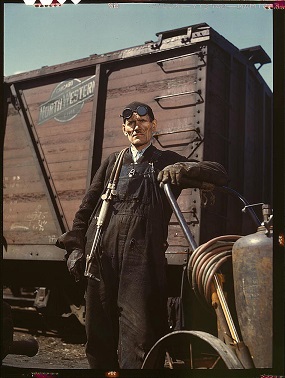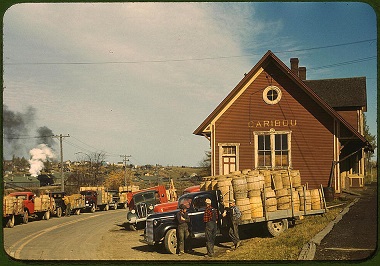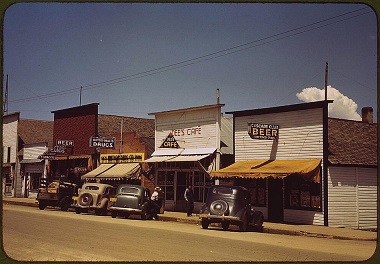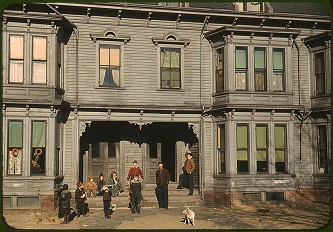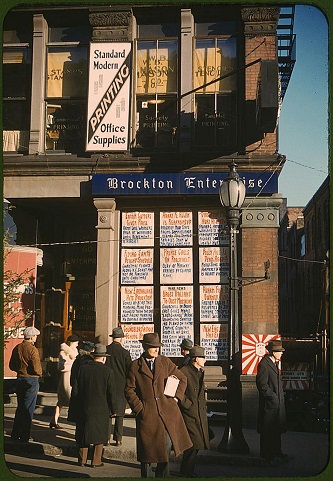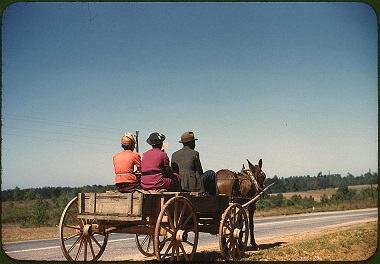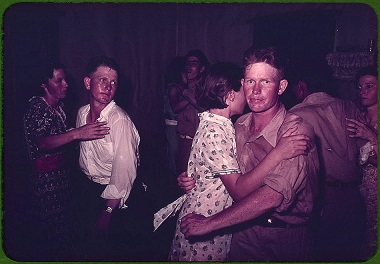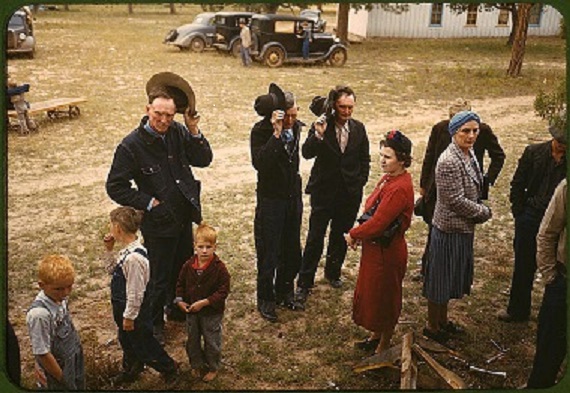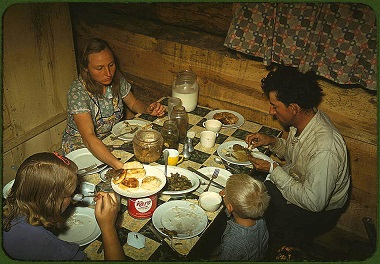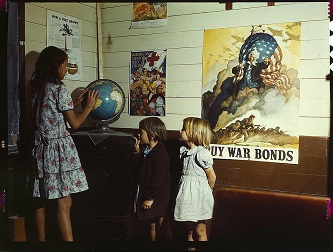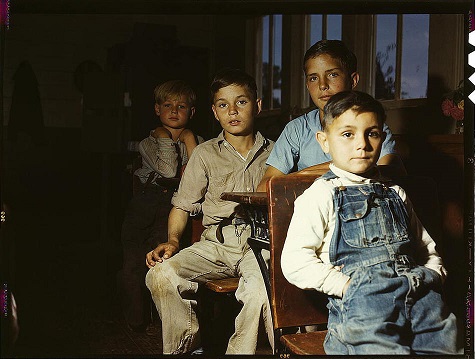The Law of Generations
The Law of Generations is a simple rule about how families in America change from one generation to the next. Unlike much of the world, because of freedoms unique to America, and the constant flow of new blood to our shores, no two generations are the same. In Part II I’ll lay out First Principles as to how this Law of Generations works, and what you can do to build your own scrapbook without having to subscribe to Ancestry.com. But this isn’t about genealogy. It’s about a thing you share with every other American, regardless of their station in life, from doctor, to lawyer, from rich man to poor man. For we all rose from the same sort of people. This is how many of them looked in 1940.
Besides being interesting, this will be illuminating, for the American family has shaped the development of America since the very beginning at Jamestown and Plymouth, and you need to know how that works for you and your family no matter when your First Settler came onshore.
But here, Part I, I only want to walk you through a photographic essay of what your family looked like in 1940, when your great grandparents were no older than you are, and your own parents mere gleams in their eyes. I am quite sure none of you can believe these sort of people are among your ancestors, only 75 years ago, but they are.
As I’ll explain in Part II, we all live in three-generation worlds made up of child-parent-and grand parents. At 20 you’re still the child at the front of that equation. But as you grow to have children, your grandparents drop out of the family memory book, and the three-generation process re-starts with you now in the middle as the parent than in the front as the kid.
What is most often lost is that fourth generation, the great grandparents, for very few children have any memory of them. So I want to give you a peek at what your great grandparents looked liked, and your grandparents as children, and the sorts of lives they lived in 1940. The choices weren’t as wide and varied as they would soon become.
I know that for 20-something Millenniasls thinking in terms of quarter- or half-centuries is like studying ancient history. But your own family’s ancient history is found in these photos, and if you search around, you will find similar photos buried away in family albums at home that no one bothers to look at anymore, since all the people in them have passed away. You should be interested in them, and begin to consider just what sort of history will be in your own children’s backpack as they grow up and finally move out to be on their own.
For 2015 Millennials these third and fourth generations are the real kickers, simply because of the unbelievable changes that occurred in America between 1940 and 1975. My grandfather was born in 1897, and died in 1971. In our last conversation he told me the greatest thing he ever witnessed in his lifetime was the building of the Panama Canal, which covered an entire section in my high school history book in 1960. An engineering marvel in its day, I doubt it even earned passing mention in your modern history books.
But for sheer awesomeness, my grandfather went on, it was the very idea that he was born before the Wright Brothers flew the first airplane (1903) but would then live to see a man walk on the moon (1969). “Well, there’ s nothing to compare with that.”
It may stun you to know how your family looked at the time of your great grandparents. None of you have ever stopped to consider how humble your family’s origins (what I call “the House”) really were. These photos will give you some idea of the roots of your House, and, as I will mention often, “the shoulders you stand on.” And in most cases, we all share the same sorts of shoulders, and al ways have.
This is from a small farm town in New Mexico, 1940. Their name was Caudill, typical small farmers, they were probably in their 30′s here. It was a hard life.
Or, if you’re family is from the Midwest, Chicago, this is what a working man down at the railyard looked like. That was one of the best outdoor jobs (men preferred outdoor work in those days) available in those days. At least one of his grandchildren would have gone to college, because the pay was good but also very hard, and most men didn’t want their kids to have to work those kinds of hours. One of the things arising from this generation was an almost universal sentiment that every working family wanted opportunities to be better for their children. That was their life’s mission.
Above, in the East, this is a small town and syrup business in Maine and a small town in Connecticut. 1940.
Below, southern and western small towns. Even bigger cities west of the Mississippi River had no more three-four stop lights.
Below, there were no suburbs in 1940, you either lived in the city, a small town or a farm.
An apartment building in Massachusetts, not too ritzy, but not a slum.
Farm life was more spacious in one sense, and more sparse in another, both in terms of accoutrements and in terms of company; having someone to talk to.
A town newspaper in Massachusetts, so everyone could at least read the headlines.
A small grocery store…every neighborhood had one. There were no chain stores in 1940, and a penny could get a kid an orange or a piece of bubble gum. Oranges were so rare when I was a kid in the 1950s, we’d lunge at the orange first, for they’d only be on the shelves a few weeks a year.
Cars were scarce, and only the rich had two in 1940, but they still got to town and to church on Sunday. But by 1950, after World War II, almost every American family had a car. My family got our first car in 1948 after my Dad came home from the war, and it was a Ford Model T, without a top, which my Dad had for a year until he could afford a used Nash for $100. I can still remember the smell of the upholstery in that car. It was the first car I ever got to sit in the front seat.
Entertainment
People had radios, but no DeeJays. or even record players, let alone iTunes. Most homes only had radios in 1940, those that had electricity. A dance at the American Legion Hall was the most popular form of entertainment. Many were free, where patrons passed the hat for the band, or no more than a dollar a couple at the door.
As for baby sitters, many just took the kids and let them sleep on a bed in a back room. I was born five years after these pictures were taken, but have slept at dances and the clothes on these kids are the same as they were in 1949.
The church picnic was also a great source of entertainment and good food. Here, they pause for the saying of grace, a practice many Millennials have never experienced, even on Thanksgiving, or know its meaning or lineage in their family. Still, I am quite certain it is part of your family tree and the shoulders you stand on. So be careful what you say about it.
The county fair was the one event every kid had marked on his calendar.
Farm kids especially, but all but the richest kids in 1940 had to pull their own weight, with chores around the house.
The family dinner table more often looked like this. This is the same Caudill family shown at the top.
If they could have sent family photos for Christmas cards, a practice that didn’t begin until the 1950s, they would have looked something like this:
This was the rural middle class in 1940
No matter what part of the country your family came from, the kids looked like this in school
These girls were born around 1924, so they would be around 90 today, if still alive. So when you see them being wheeled around at Walmart, pause and smile because now you know what how looked once upon a time. They would appreciate it if they knew, and you are the wiser because you bothered to know.
These kids will be 80-90 today. Your great grandparents probably looked like this at 10-12.
In December, 1941 war came along (it was in all the papers), and men went to war and women went to work in the factories to build their weapons. Everything changed in American life between 1942 and 1945. No one was ever the same again. Over 400,000 of them died.
They were called “the Greatest Generation”, and your great grandparents were among them.

Finally, American patriotism, like that prayer at mealtime, was considered normal in 1940. Almost every American practiced it. 95% at least.
So the 4th of July celebration was America’s favorite national holiday, and celebrated by every community, so don’t believe what they tell you about a lot of Americans not loving America. That was only the communists whisperin, only today they bellow..
These too are part of the shoulders you all stand on:
Thus endeth the lesson.
(The photos shown here are from a Denver Post photo blog, taken from a Farm Security Administration slide set, remarkable for their color quality. They were passed to me by one of our friends, Streetwise, who’s just launched a new travel blog, Jetamore.com, without whose contribution this photo essay would be impossible.)

